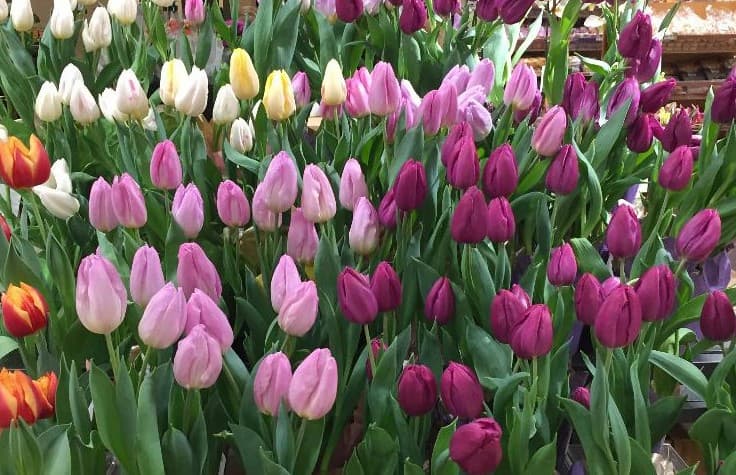Growing Flowering Plant Bulbs, Corms, and Rhizomes

How to Grow Flower Bulbs, Corms, and Rhizomes
We commonly use the terms Fall Bulb, Spring Bulbs, or Flower Bulb when referring to a wide range of plants for both spring and fall. Most likely you (and I) have collectively referred to these flowers as bulbs. In actuality, many of them come from Corms, Tubers, Tuberous roots, or a Rhizome. Don’t know the difference? Don’t Care? That’s okay. You’re in good company. What does matter, is that we plant the flowers that we want to bloom in our home gardens. As we talk about growing flower bulbs, we will also refer to them somewhat generically as bulbs too! Use these guides on “How to Grow Bulbs” and you will soon have beautiful flowers blooming in your yards.
If you want to have beautiful, spring flowers like Tulips, Daffodils, and Hyacinths, you have to plant them in the Fall. Planting bulbs is fun. Armed with one tool, a bulb planter, this is a relatively easy and fun task. And, it gets you outdoors during great fall weather.
In general, Fall planted bulbs should be planted four to six weeks before the first frost in your area. Typically, grown in flowerbeds around your house, or trees, flower bulbs prefer full sunlight and well-drained, yet moist soil.
Speaking the language of bulbs, spring bulbs are planted in the spring. But, they bloom in late summer or Fall. On the other hand, Fall bulbs, like Tulips, are planted in the fall and bloom in the spring.
BTW: You can find flower bulbs for sale just about anywhere. However, avid gardeners come to this website to learn how to grow them.

How to Grow Guide for Your Favorite Bulbs, Corms, or Rhizome Plants
Amaryllis
Anemone
Astilbe
Bat Flowers (Tacca Chantieri)
Blazing Star
Caladium
Calla Lily
Cannas
Convallaria(Lily of the Valley)
Crocosmia
Crocus
Daffodils
Easter Lilies
Elephant Ears
Freesia
Gladiolus
Grape Hyacinth
Hyacinth
Iris
Liatris
Muscari
Ornamental Allium
Paper Whites
Star of Bethlehem
Tiger Lilies
Tulips
Did you know? Flowering bulbs are “Geophytes”. This scientific jargon means that they have their growing point below the surface of the soil. Food (energy) is stored in the bulb for use in the spring. Of course, we already knew that!

More on Growing Flower Bulbs, Corms and Rhizomes
Depth – Do you know how deep to plant bulbs and corms? Find out.
Fertilizer – How to fertilize your bulbs and corms.
Blood Meal – It’s a high-nitrogen, organic bulb fertilizer.
Forcing Bulbs – It’s a rewarding winter indoor gardening activity.
How to Grow – Learn or review the steps to preparing the flower bed.
Pests – There’s no shortage of pests who eat or rob your planted bulbs.
Propagation – Our flowers are so beautiful. Let’s make more!
Related Articles
Also, people who read this article will like:
Flower Gallery – Find pictures of your favorite flowers.
Flower Bulbs for Sale – And, remember to buy extra for growing indoors in the winter.
Please support our site. Shop for:
- rmmatthews100@hotmail.com
- 585-721-6528
- Rochester, NY
©1999-2024 GardenersNet.Com, All Rights Reserved

